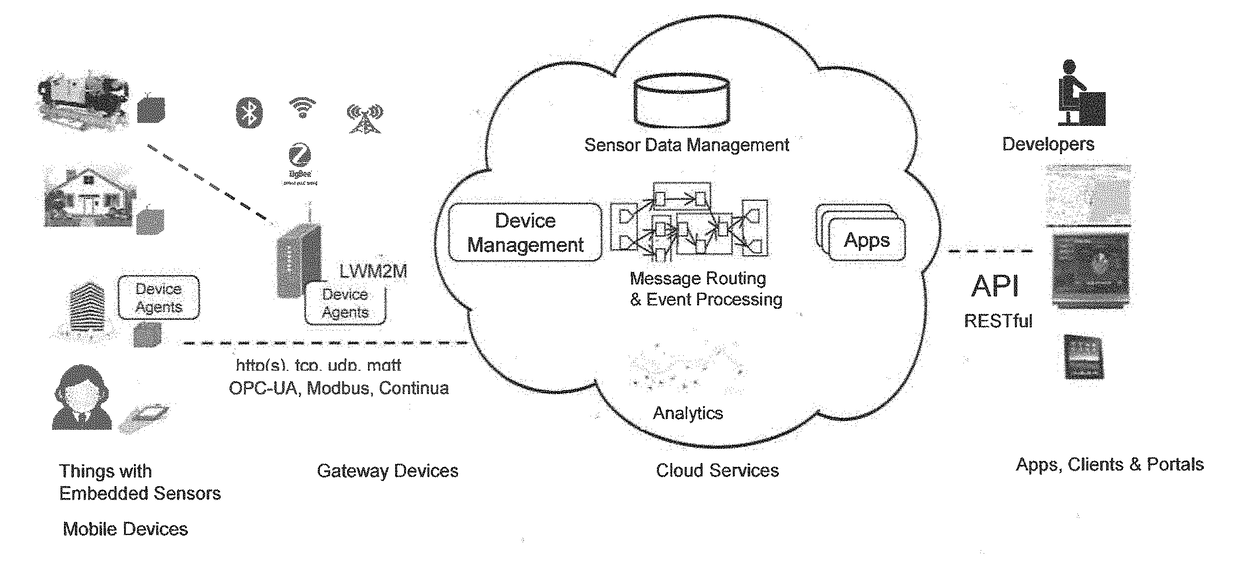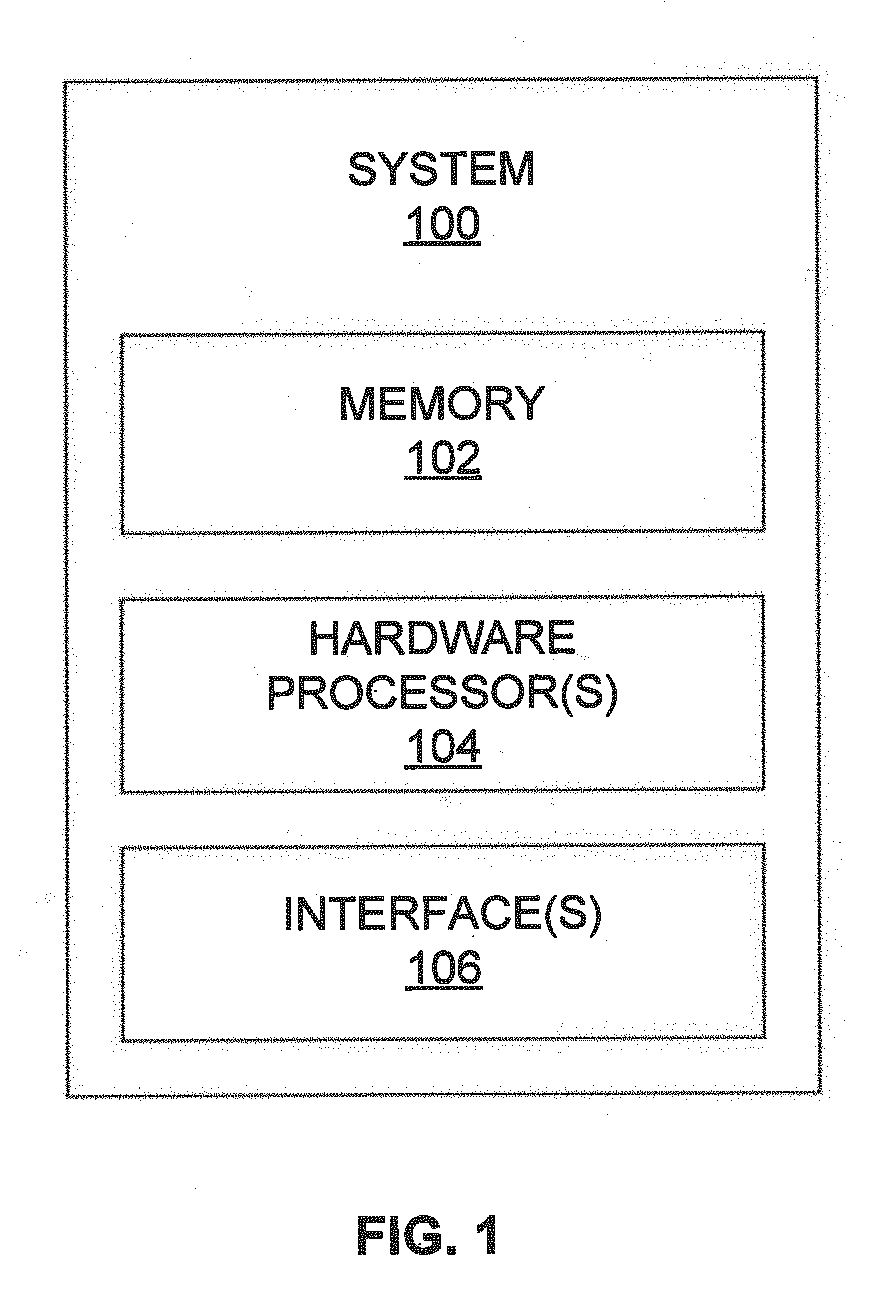SYSTEMS AND METHODS FOR PREDICTING PERFORMANCE OF APPLICATIONS ON AN INTERNET OF THINGS (IoT) PLATFORM
a technology of performance prediction and internet of things, applied in the field of performance prediction systems, can solve the problems of increasing the complexity of building performance models for iot applications, none of these platforms report any performance analysis data, and the volume of input data being injected into the application backend is also likely to increase significantly
- Summary
- Abstract
- Description
- Claims
- Application Information
AI Technical Summary
Benefits of technology
Problems solved by technology
Method used
Image
Examples
Embodiment Construction
[0030]Exemplary embodiments are described with reference to the accompanying drawings. In the figures, the left-most digit(s) of a reference number identifies the figure in which the reference number first appears. Wherever convenient, the same reference numbers are used throughout the drawings to refer to the same or like parts. While examples and features of disclosed principles are described herein, modifications, adaptations, and other implementations are possible without departing from the spirit and scope of the disclosed embodiments. It is intended that the following detailed description be considered as exemplary only, with the true scope and spirit being indicated by the following claims.
[0031]In IT organization, there is a requirement to ensure that applications developed on their own IoT platform can handle a large number of users without affecting the response time. The applications have multiple online transactions that analyze the input data from a number of sources. T...
PUM
 Login to View More
Login to View More Abstract
Description
Claims
Application Information
 Login to View More
Login to View More - R&D
- Intellectual Property
- Life Sciences
- Materials
- Tech Scout
- Unparalleled Data Quality
- Higher Quality Content
- 60% Fewer Hallucinations
Browse by: Latest US Patents, China's latest patents, Technical Efficacy Thesaurus, Application Domain, Technology Topic, Popular Technical Reports.
© 2025 PatSnap. All rights reserved.Legal|Privacy policy|Modern Slavery Act Transparency Statement|Sitemap|About US| Contact US: help@patsnap.com



